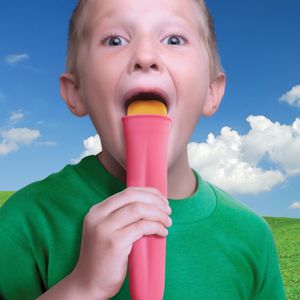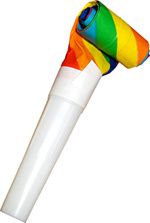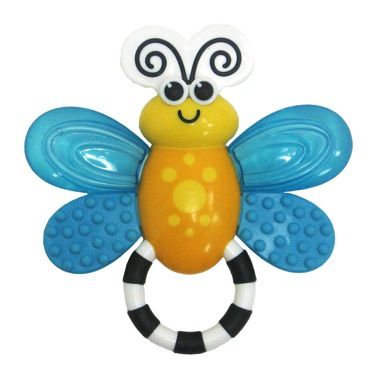
We all use our mouths in different ways throughout the day. We may use them to comfort ourselves (sucking a sweet, sucking your thumb, biting nails or just touching your mouth when stressed); to regulate and organise ourselves or to help maintain attention (chewing gum, chewing the end of a pen or pencil, taking deep breaths, blowing, whistling, biting your lip etc.). We also use our breath to help regulate and organise ourselves. The way we breathe in response to stimuli from our environment can help us to process the stimuli better. It can also assist in the activities we do daily.
Touch receptors (cells that give your brain information about the world around you through touch) are located all around your body. The lips and the fingers are considered to have the most concentration of touch receptor cells in the body. They correlate to a larger area of the brain that receives messages from the lips and fingers compared to other less sensitive areas of the body that correlate to smaller areas of the brain. More brain power is spent interpreting touch sensations from the lips and fingers than from other areas of the body that have touch receptor cells. Touch receptors help us to experience hot, cold, pain or pressure. Touch is an important sense because without it we would not recognise pain (e.g. from boiling water) and this would put us at great risk. Touch processing is very closely linked to emotional development which can also affect healing and the reduction of anxiety and tension. It has a great impact on a child's physical and psychological well-being.

It is natural to use our mouths in a variety of ways during the day. We also incorporate different uses of our breathing into this. We tend to have more of a shallow breath when angry or nervous. We take a deep breath before lifting something heavy or before raising our voice. All of this is dependent on the "Suck Swallow Breathe" synchrony (SSB "Out of the Mouths of Babes" S. Frick, R. Frick, P. Oetter, & E. Richter 1996). Our breath reflects our thoughts and feelings and can help to regulate us by calming and reorganising our systems. Our oral motor skills, touch processing skills and ability to vary breathing patterns all contribute to attention and organization of behaviour. The muscles used for sucking, blowing, chewing, swallowing, biting and breathing are the same muscles that help with good posture. Postural control needs strong neck, chest, stomach and back muscles. This in turn assists a child to be alert and attentive.

Some children have difficulty with oral sensory processing and the Suck, Swallow, Breathe rhythm doesn't seem to flow or synchronise properly. These children will have difficulty staying alert and with organisation of behaviour as well as some minor health problems, digestive problems, difficulty with speech, chronic colds, chronic constipation or diarrhoea, ear infections and problems with teeth. They may have some postural and motor development difficulties and would possibly have some visual issues (not watching where they are going or what they are doing, focusing on an object by looking at it from the side). These children are usually over sensitive to touch around the mouth (hyper-sensitive), or they do not receive the messages from the touch receptors well enough (hypo-sensitive). The oral sensitivity will need investigation and the right type of treatment activities to assist sensory processing.
A child with oral sensitivity may be hyper-sensitive or hypo-sensitive. The hyper-sensitive child (usually with oral defensiveness) will not like brushing their teeth, eating, or washing their face. They are often picky eaters and don't like foods with certain textures. These children tend to gag often when eating and may need to drink to help their food go down. They may use their teeth to remove food from the spoon or fork and they may have other tactile senstitivities throughout the body such as a dislike for touching messy object (paints, glue etc.) or sensitivity to different textures of fabrics and clothing.

The hypo-sensitive child is usually a messy eater who often leaves food in and around their mouth after a meal. They tend to over fill their mouth which can result in choking. These children can be observed drooling beyond the appropriate age. They may lick items and may prefer strong flavours. These children tend to have hypo-sensitivity on other parts of their bodies and may be found rubbing their hands on rough surfaces or different textures as well as enjoying lying under heavy layers of blankets and wearing layers of clothing on their bodies.
There are activities that an occupational therapist can recommend to help with sensory processing in and around the mouth as well as well as self-regulation through breath. The right amount of sensory input is needed to help the child regulate and process the stimuli in and around the mouth. This needs to be introduced gradually with a variety of pressure, vibration and textured items. Light and deep touch is used to sensitise and desensitise the child's oral structure. Various textured foods can also be used as part of the therapy as the child is taught how to take different sized bites and feel the food more appropriately in the mouth.
Stimulating the mouth can also have a positive effect on the nervous system that is often immediate. The activities tend to encourage deep breathing, which helps to organise and regulate the child. The following activities are an example of therapeutic tools and games that help:
1. A Volcano of Bubbles
Fill a large bowl about half full of water. Add a few squirts of dishwashing liquid. A few drops of food colouring may be added too. Give the child a straw, preferably a curly, crazy straw and encourage them to blow into the water. The child should keep blowing until the bubbles spill over the rim of the bowl. This is a fun activity to do with two children. Small plastic animals can be placed at the bottom of the bowl and the children can time how long it takes until the animals are completely hidden.
2. Party Blower Target
Set up small animal figures on building blocks or cubes made of Lego. Ask the child to lie on their stomach in front of the figures. Using a large party blower (the ones that curl up and make a sound); the child can pretend to be a lizard or frog with a long tongue and knock down the figures. Lying on their stomach helps the child to regulate them and it is beneficial for proprioceptive feedback (see sensory integration). Other items can be used for the same game such as cut out cardboard figures.
3. Blow Pens
Blow pens are a good way to be creative whilst benefitting from a blowing activity. Pens are available from a variety of places in a variety of colours. Encourage the child to breathe deeply before blowing and watch that they don't become light headed. The activity should be stopped if they become light headed and tried again another day.
4. Bubble Blowing
Use bubble mixture to blow a variety of shapes and sizes. The semi-permanent bubbles are a fun way of creating a different atmosphere in a room as they last a while and the room can be filled with bubbles.
5. Chewing
Crunchy or chewy foods are organising and provide good sensory feedback for the mouth. Crunchy foods are alerting and chewy foods are organising. Observe the child's level of arousal or organisation and use the snacks throughout the day. Use them cautiously when doing movement activities.
6. Curly Straws
Long curly straws give the muscles around the mouth extra work when drinking. This makes meal and snack times fun whilst fulfilling a therapy aim.
7. Vibration
Vibration in and around the mouth will provide extra sensory feedback which will in turn help to balance the tactile responses. Use a tool like the Z Vibe or electric/battery toothbrush. This helps by desensitising an over sensitive mouth (use on low and slow vibration), or by stimulating an under sensitive mouth (using fast, high vibration).
The above activities are examples used in occupational therapy. These activities may not be suitable for every child as each individual child will need to be fully assessed by an occupational therapist to determine the degree and nature of their oral sensory processing difficulties. Using the above activities will not harm a healthy child, but it is recommended to have a full OT assessment to ensure the desired outcome.













/idata%2F4130722%2FimagesCA1ZTRS8-copy-1.jpg)
/idata%2F4130722%2Fbaby-eating-apple_thumb.jpg)
/idata%2F4130722%2Fsensoryballs.jpg)
/image%2F1484276%2F20171122%2Fob_85a846_radiator-anniversary7.jpg)
/image%2F1484276%2F20151001%2Fob_ae1435_dsc02009.JPG)